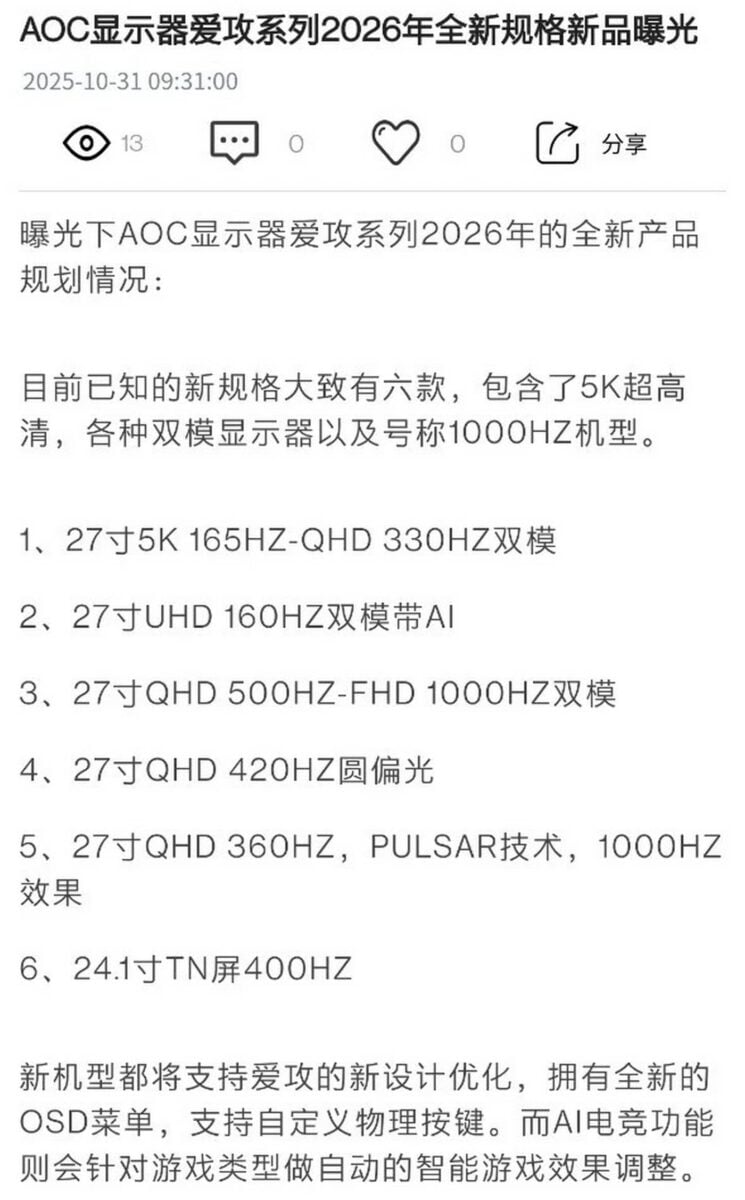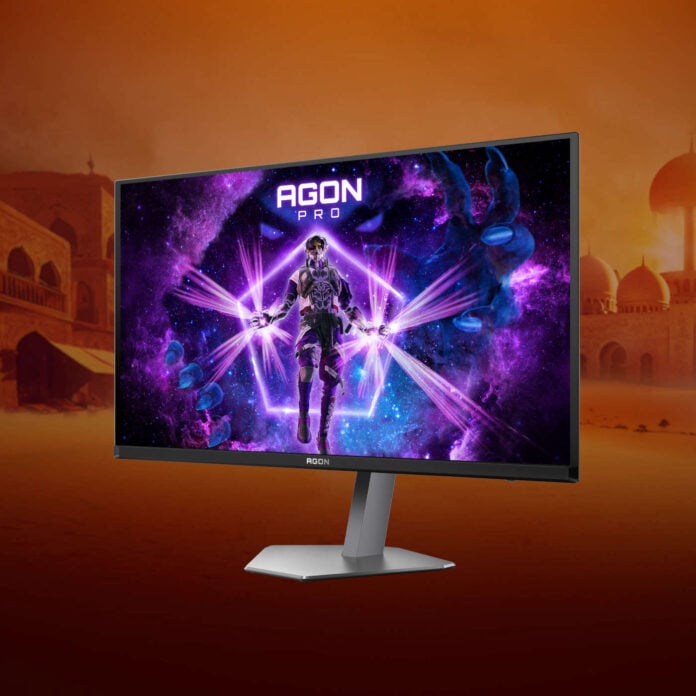AOC is gearing up to unleash the world’s fastest gaming monitor in 2026, boasting up to 1,000Hz refresh rate. With it, a new standard for motion clarity will be set, making even the fastest 540Hz displays look slow by comparison. And if you want one, you’d better start saving for a system upgrade since only the best GPUs can push the required frames per second.
According to a leaked lineup via ITHome, the brand is planning at least six new Agon monitors spanning from 5K 165Hz to QHD 500Hz and FHD 1,000Hz, the list of which goes as follows:
- 27-in 5K 165Hz / QHD 330Hz dual-mode
- 27-in UHD 160Hz dual-mode with AI
- 27-in QHD 500Hz / FHD 1,000Hz dual-mode
- 27-in QHD 420Hz with circular polarisation
- 27-in QHD 360Hz, Pulsar technology, “1,000Hz effect”
- 24.1-in TN panel, 400Hz
The most interesting model is undoubtedly the 27in QHD (2560×1440) 500Hz, which can switch to a FHD (1920×1080) resolution at a whopping 1,000Hz using dual-mode technology. This makes it the fastest monitor, at least on the consumer market, beating even upcoming 720Hz OLED displays. That said, depending on the panel type selected by AOC, 720Hz OLEDs may still hold an advantage in pixel response times and overall image clarity.
As mentioned, this high refresh rate will only be achievable at the lower FHD resolution, making it ideal for esports titles where speed takes the upper hand over image quality. This is only a reasonable target since AAA games are unlikely to push this many fps even on the best GPUs available. ITHome notes that the FHD claim may be wrong as QHD dual-mode monitors tend to go for a 720p resolution on their second mode, so more GPUs may deliver the required 1,000fps.
Understandably, transmitting a goodly amount of fps will also require a lot of bandwidth, only offered by the latest DisplayPort and HDMI interfaces. For reference, an uncompressed 1080p stream at 1,000Hz requires approximately 77Gb/s, which is only possible through the DisplayPort 2.1 UHBR20 interface. Thankfully, Display Stream Compression (DSC) can be used to reduce this requirement to make it manageable by slower interfaces.

Those who prefer a middle ground between resolution and clarity may opt instead for the Pulsar-ready 27-in QHD 360Hz model. This technology is said to deliver a clarity equivalent to native 1,000Hz panels by dynamically syncing the monitor’s backlight strobing with the fluctuating frame rate and adaptive overdrive, reducing ghosting and motion blur. In other words, a less demanding and probably less expensive QHD 360Hz monitor that acts somewhat like a 1,000Hz. An interesting one to keep an eye out for.
Some of these leaked models may be announced during the CES 2026 show, especially the 1,000Hz model. Considering that other brands are also planning similar monitors, AOC is unlikely to keep its offering under wraps. As for pricing, expect a hefty premium for these flagship solutions, though, like usual, AOC will probably give the competition a run for their money in this department.


